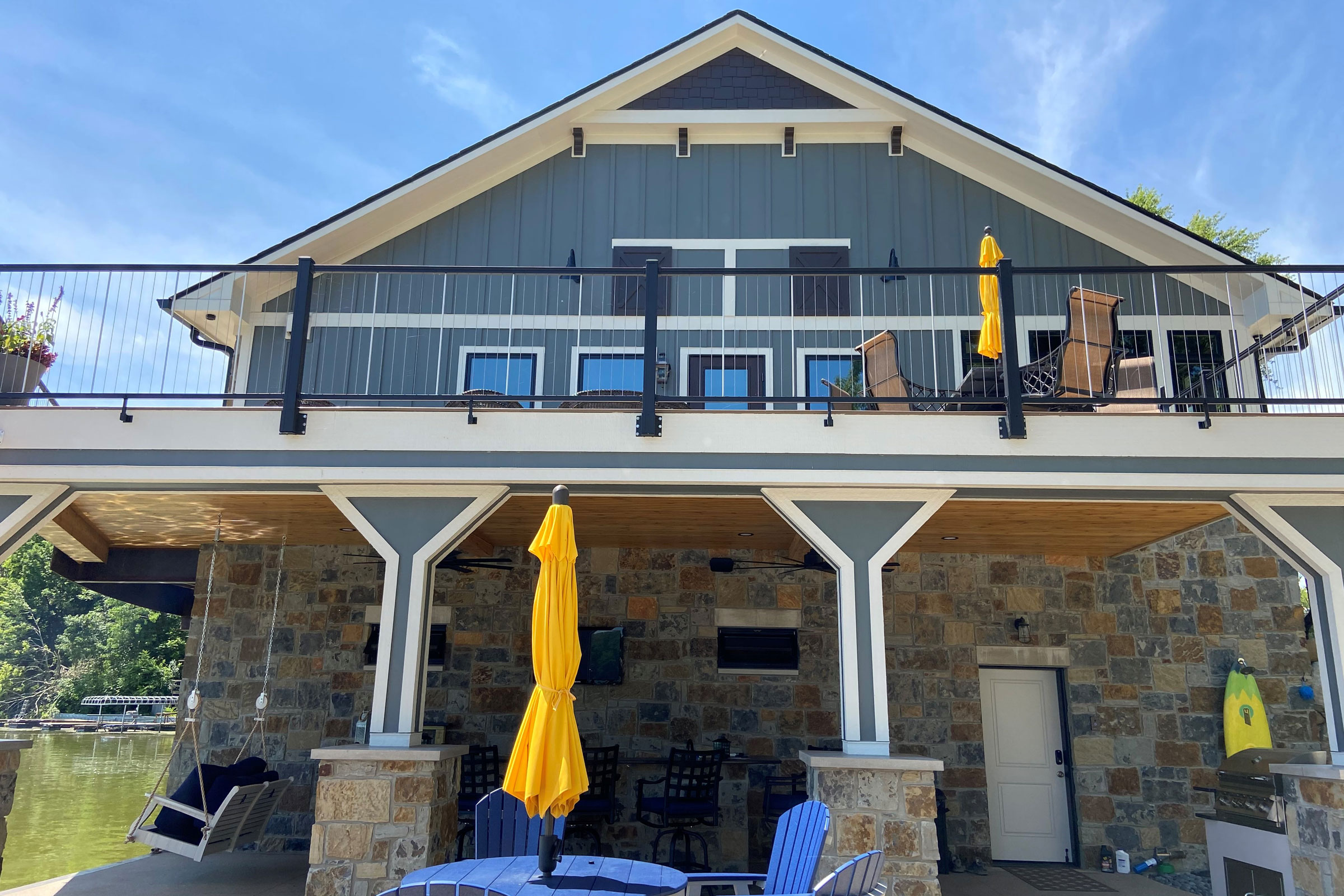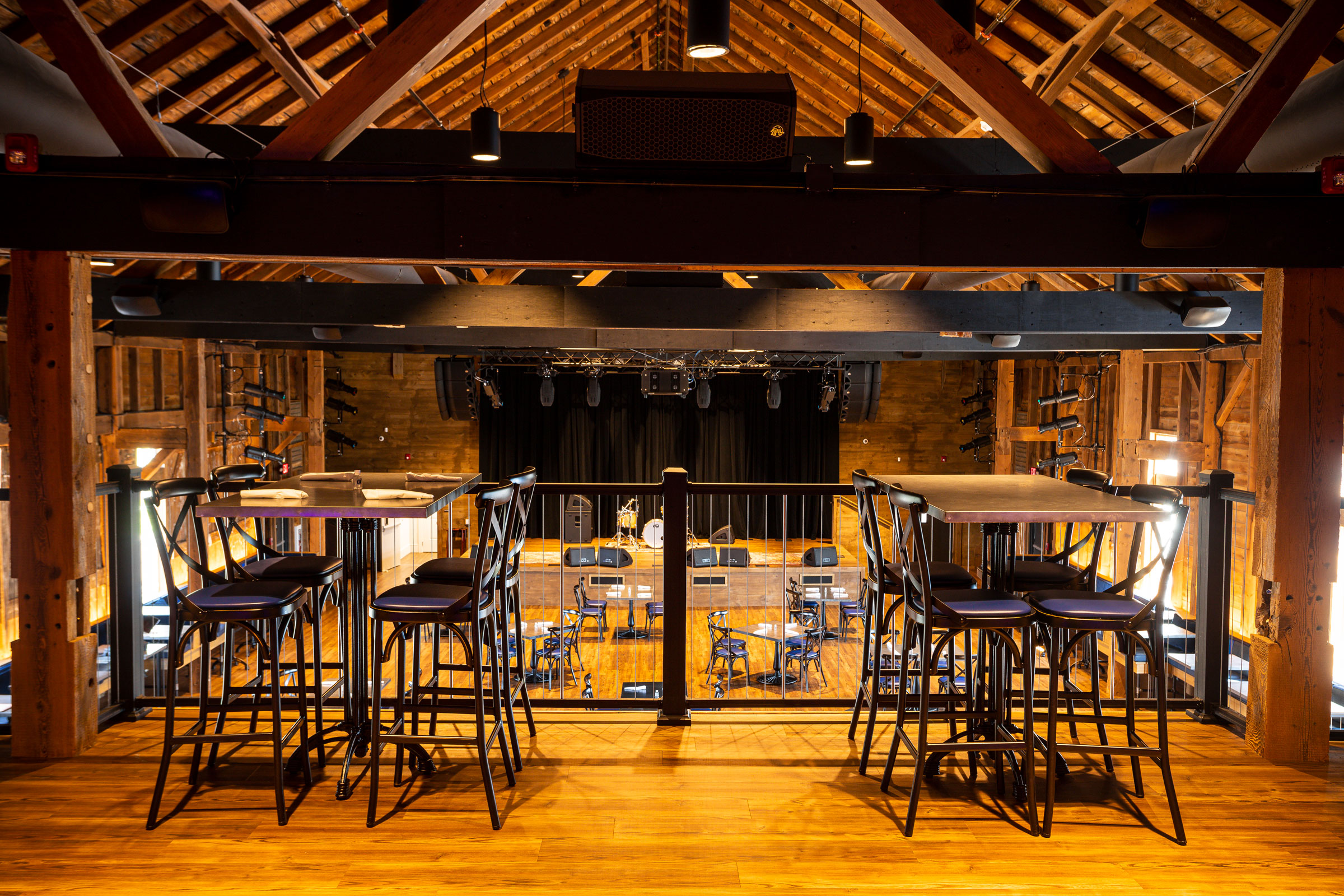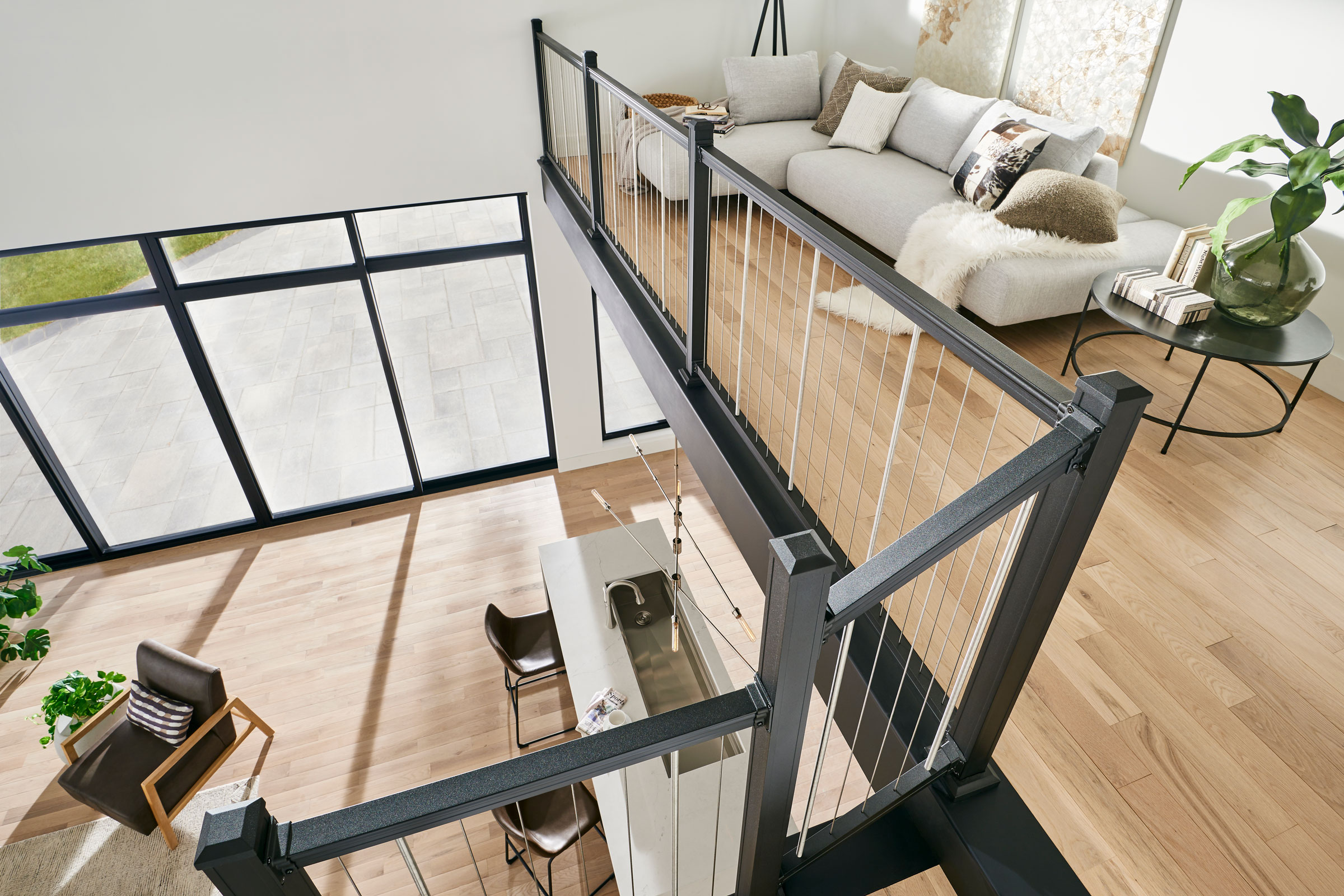Story at a glance:
- Vertical cable railing offers “wow” factor with sleek, modern design.
- Vertical cable is a solution for those worried about “climbability” in a space.
- Vertical cable rail allows for open views in your design.
Cable railing continues to be a popular choice for homeowners all across the country, with many homeowners opting for horizontal cable railing on their decks. Numerous railing manufacturers make horizontal cable systems, and many installers are familiar with it.
But there is an alternative: Vertical cable railing is another option on the cable railing scene and is a fun, unique offering that still provides the modern style and open feel of cable infill. Here are three things to know about vertical cable railing.
1. Vertical Cable Needs Support

Photo courtesy of Key-Link
Cable tension alone can’t support a vertical cable section, at least not if you want it to remain secure and meet code requirements. To address this, manufacturers add support balusters. Some are powder-coated to match the railing; Key-Link chooses stainless steel to blend in seamlessly with the cable.
The size, number, and placement (or suggested placement) of the support balusters is up to the manufacturer and should be based on meeting code requirements. Some companies place a support baluster every three cables, and others, like Key-Link, go up to five. No matter what, your manufacturer should be able to provide documentation showing that their sections are code compliant.
2. Vertical Cable is Packaged Differently
- Photo courtesy of Key-Link
- Photo courtesy of Key-Link
With horizontal cable sections, railings are packaged together while the cable comes separately. Vertical cable is done differently. It can come pre-installed in a boxed section, or the whole section can be sold as a panel.
Vertical cable sections in a box are convenient to store and carry, while the panel configuration means the whole section is already together and you don’t have to install support balusters onsite. One drawback: The panel configuration can take up more space, and the installer doesn’t have the flexibility to place their support balusters.
3. Vertical Cable is Unique

Photo courtesy of Key-Link
Beautiful vertical cable can make any home a neighborhood showpiece and is an optimal choice for commercial spaces because of the way it allows for open views. For anyone concerned about “climbability” (aka the “ladder effect”), vertical cable is a wonderful alternative to horizontal cable. And it’s rare enough in the marketplace that not everyone has seen it or knows about it, so it has a wow factor that some other options don’t. Plus, it provides the sleek lines and modern look that so many homeowners are looking for.




